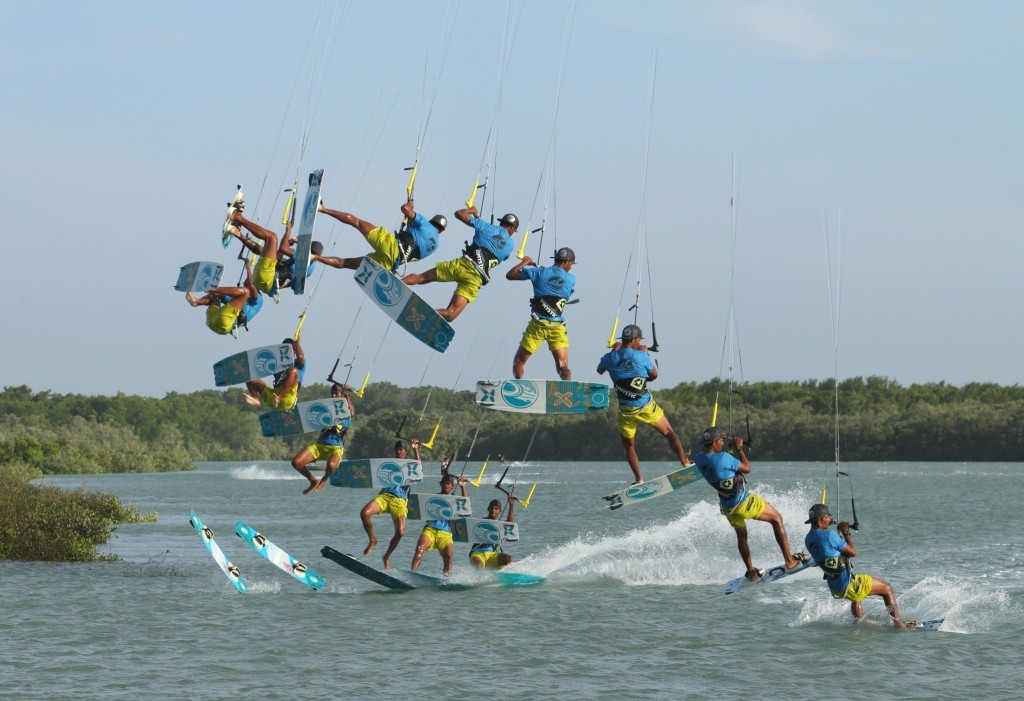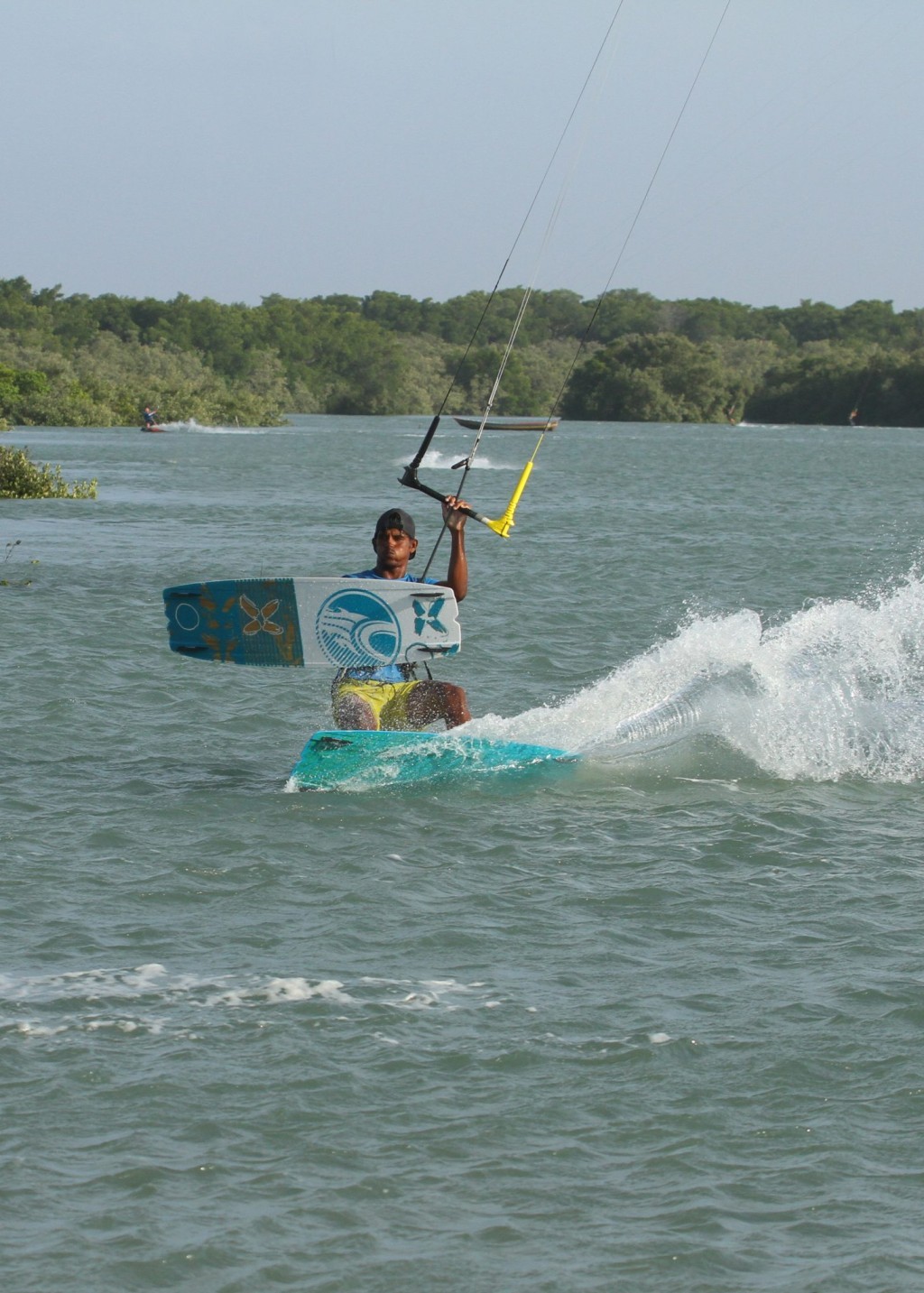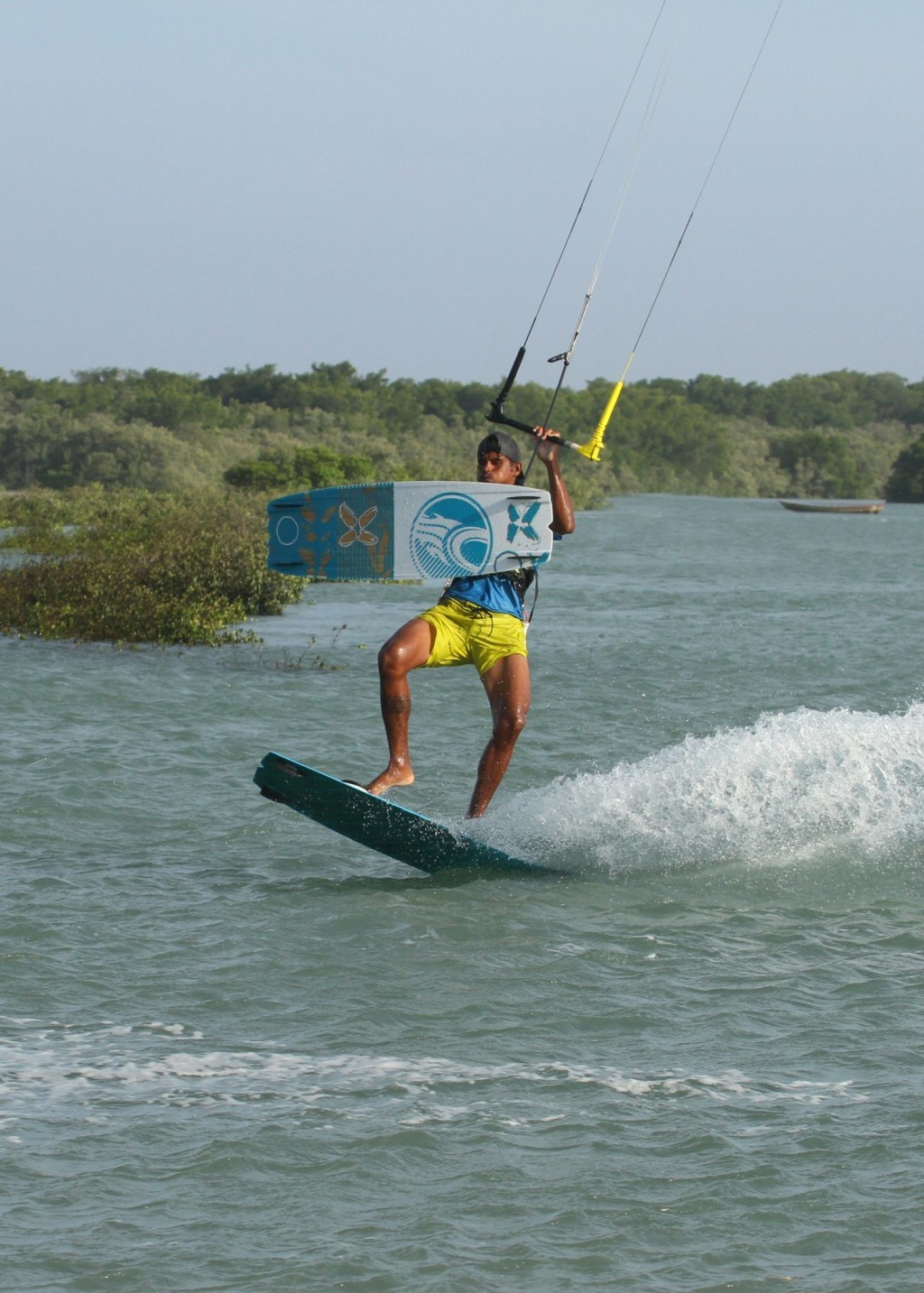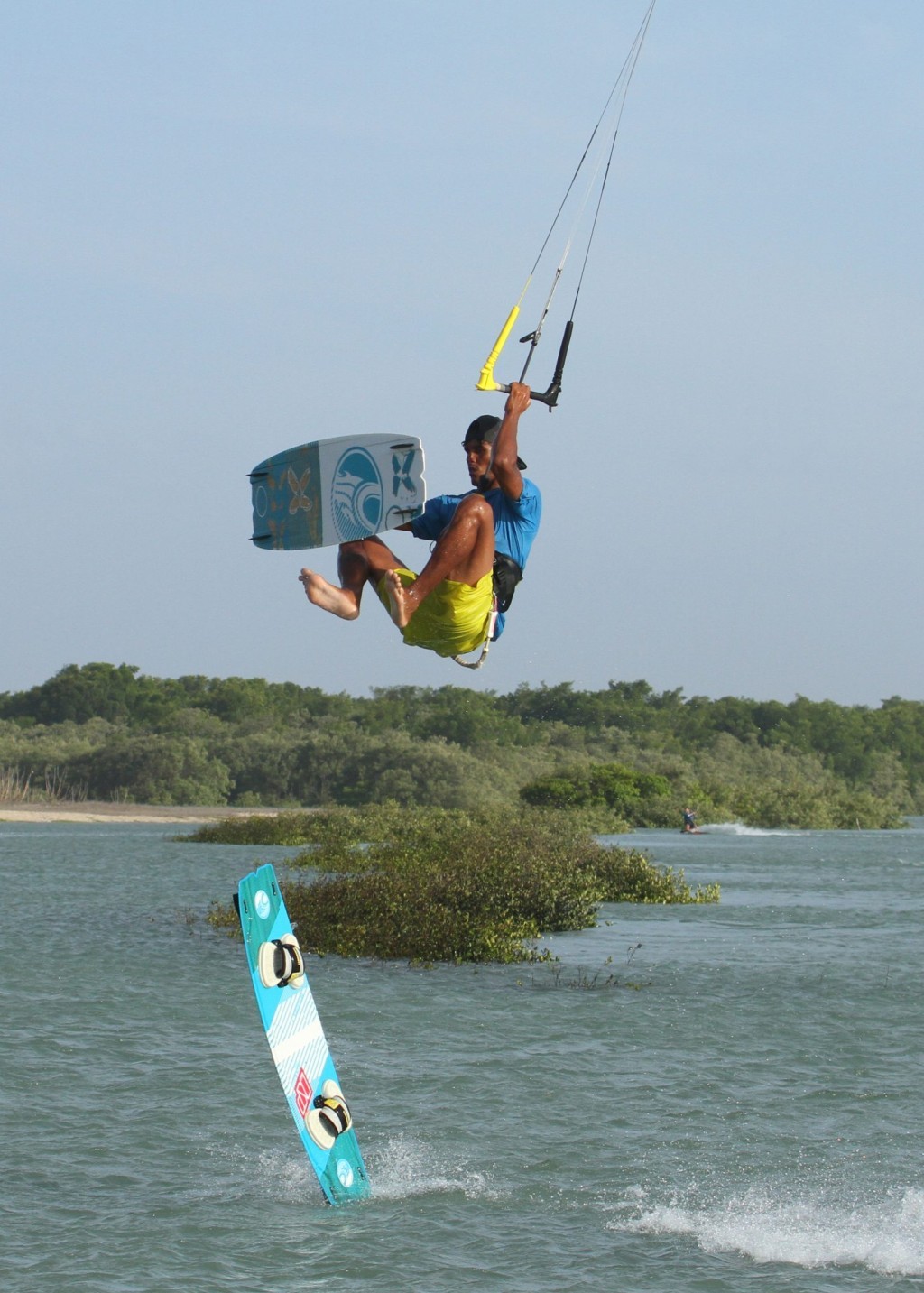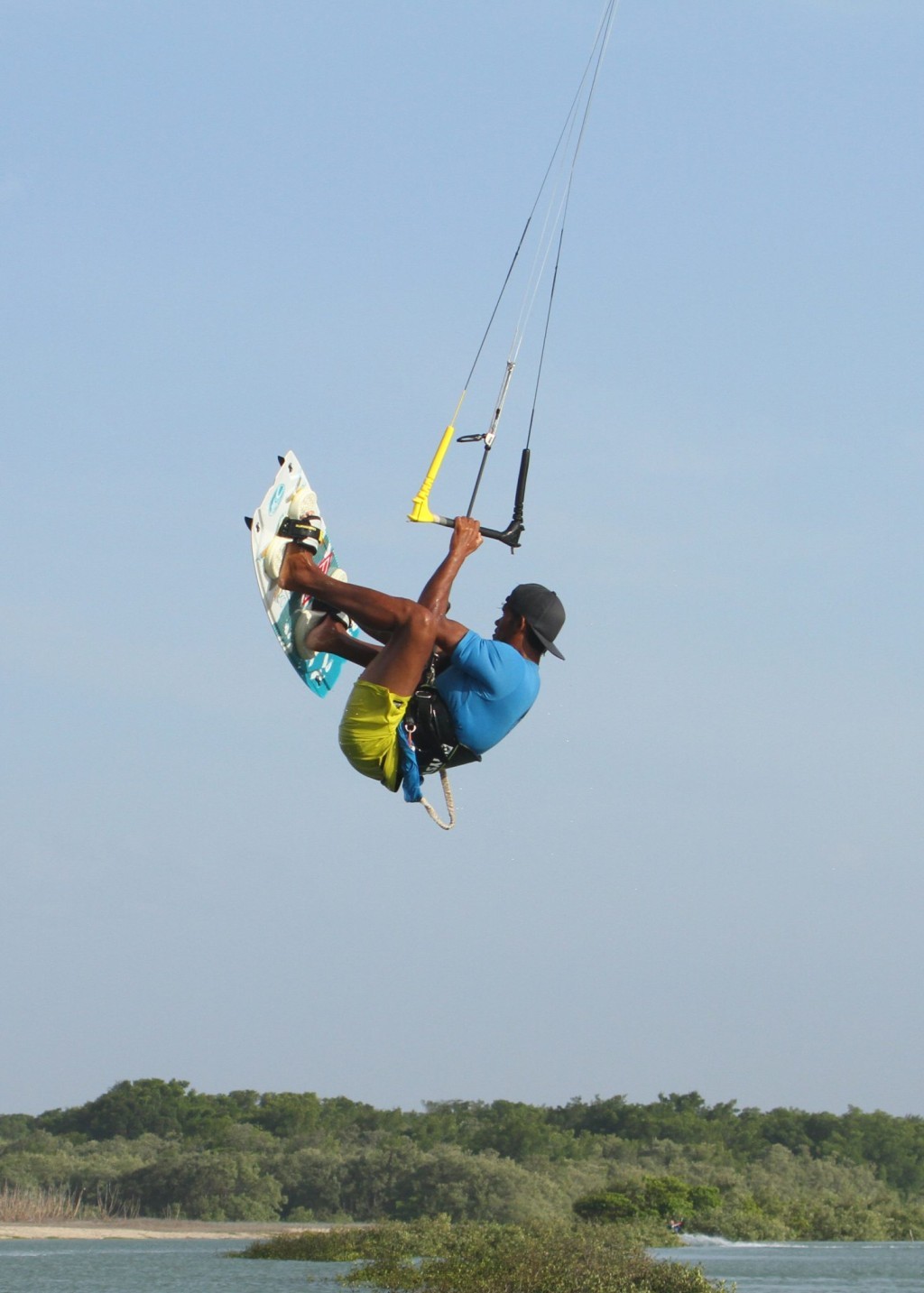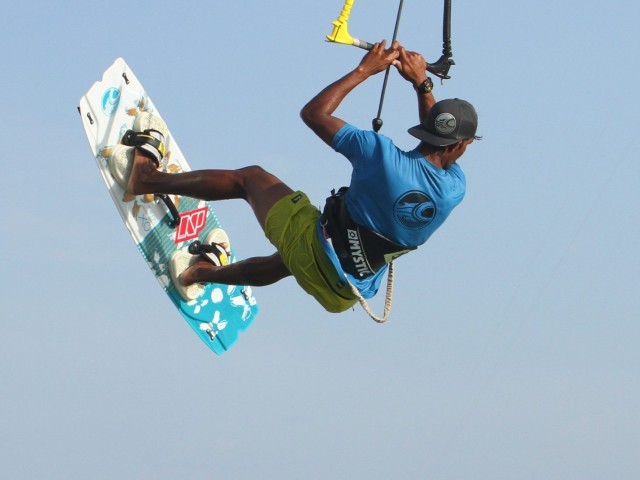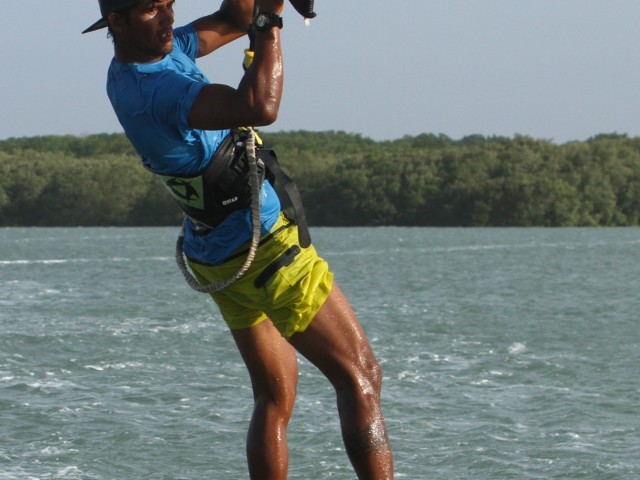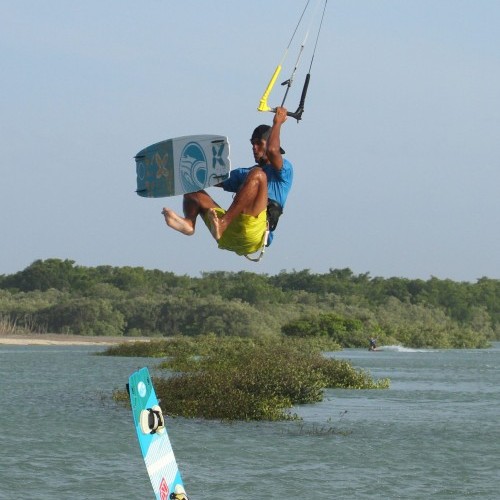
Board Swap Back Loop
Technique / Intermediate
Introduction
There are subtle ways to impress and more swanky ways to enjoy yourself. This, however, is a smooth hybrid in true Heliarde style. Someone loses their board, why not try it out! What better way to switch craft, than mid-flight during a sent back rotation. Who wouldn’t?
Skills needed. Realistically a grabbed Back Loop Transition would be ideal as at least you’ll be familiar with both the root move and controlling the kite throughout with only your back hand. Bonus move is a board off, but more for slotting the second one on, rather than ditching number one. You could say this is a board on move rather than a board off. As is our tradition let's have a look at the central mechanics of the move so that you can add these steps together and spend your next session flamboyantly “borrowing” and testing all your friends’ trusty steeds.
The Set-Up Pic A.
As with any move that requires you to get a board back on your feet, you will need hang-time. Your options to achieve this are float, height or a combination of these. Now before going any further, we’d strongly suggest that float is your friend here. Why? You’ll be holding your newly acquired test vehicle in your front hand, the idea of sending the kite hard with just your back hand on the bar may not be so appealing or wise. As such trimming your sweet spot out and sending the kite up in a more dignified manner will fashion a more successful outcome. Wiggling your feet slightly out of the straps so that you are only loosely in contact with the board will make the next step easier too. You can see in the photo that Heliarde is coming in on a good edge, just look at that kite face, with his back hand centred on the bar. He then sends the kite up by cranking his wrist as you would when body dragging, while holding the board out in front of him with an extended arm. If the board has a handle, use it, as holding it by the toeside edge will be quite tricky and need some good forearm strength.
Kick Off – Quite Literally Pic B.
Here’s where the fun really starts. As the kite moves overhead and inches past 12 o’clock Heliarde initiates his lift off and back roll. At this stage, you’ve got three jobs. First is to get up off the water and stop the kite moving any further back in the window while starting your rotation. Second is to ditch your own board. Third is to keep the new board up and ready, from where you’ll be able to slip it on your expectant toes. To get up off the water keep edging and pull the bar in. With your hand centred this should also stop the kite from moving any further. In the pic, you can see that Heliarde’s elbow is high, which means that he’ll pull the bar down level. Ditching the board goes hand in hand with kicking off your back foot as you carve that little bit to get your rotation going. Footstraps are designed to let go, so if you’ve already wiggled your feet loose, as soon as you kick off the water with your back leg, roll over onto your feet and point your toes down. Gravity will take over from here as it does in the photo. And finally holding the board up and out is fairly self-explanatory, but it does require both mental and physical effort to keep it there.
The Incoming Squirrel & The Runaway Board Pic C.
As much as we feel that Sir David Attenborough would better explain this, in a nutshell getting yourself as small and compact as possible as soon as possible is key. When a flying squirrel extends into flight, it soon compresses as it eyes up the rapidly approaching branch. Here again float rather than height is justified. If you go big, you’ll be extended for longer. So, to get into board on position sooner, less send is required. The other important factor here is the oft-required slow rotation. With only your back hand on the bar, you really need to get your toes in the stirrups sharpish, so that you can get your rear hand back on. Here Heliarde is barely off the water, and yet he’s pulled his knees straight back up. It’s also worth noting that he’s looking at the board. As well as guiding feet and straps towards unification, it keeps his head perpendicular to his shoulders which keeps his rotation slow. All the while it’s imperative to keep the bar in on the sweet spot with your elbow high. Otherwise, the kite will flutter back and drop you unceremoniously.
Board On Pic D.
Everything that you’ve done up to this point is to make this, the crux of the move, more achievable. Keeping the kite high with bar in, rotating slowly, getting nice and small with your knees up and holding the board up high, all put you in the right place to get the job done. You have essentially aligned the planets, so all that’s left to do is lower the board onto your feet and the jobs nearly a good’un. You can see that Heliarde is barely half way round his back loop and already has the board on. All the while he’s kept the kite steady and the float on. Final note here, remember to pull the board down onto your feet so that the footstraps grip - you still need to land it to make it count:)
Dualistic Pic E.
It should be obvious now that this is a move of two halves, although it’s also fair to say that the first half is a tad more intense and from here on in it’s “just” a matter of finishing. Your priority from the moment you get your feet into the new straps (hope they fit!) is to secure your front hand back onto the bar and fly the kite, and yourself back down towards a happy ending. Although most of you will be happy landing with just your front hand on the bar, having only the back hand on is a completely different kettle of fish that we’ll do well to reserve for other tricks. You can clearly see that Heliarde has now got both hands on the bar and has the luxury of steering in stereo. Once the front hand is on, turn your head and look over your shoulder for your potential landing strip.
The Arrival Pic F.
Assuming that you’re well versed in the back rotation department, the final approach to a soft and secure landing should be painless. With the kite sat just behind 12 o’clock you shouldn’t be coming around quickly at all, and as such you can time your dive of the kite to finish your back roll and pull you gleefully downwind for a marshmallow landing.
Top tips
There are a few things you could/should practice to make this all the more achievable. The most glaringly obvious unfamiliar part of this move is taking off without the comforting feel of the bar in your front hand. Therefore, it wouldn’t hurt to practice a few gentle sent back rotations where you use only your back hand to send the kite, keeping your front hand close to the bar ready to iron out any surprises.
This will be all the simpler of you trim your sweet spot out. With the sweet spot away from you, it will be both easier and feel more comfortable to attempt this.
Adding to the achievability of this move is the speed of your rotation, so concentrate on kicking up and not spinning around. Do this, and you’ll have oodles more time.
And finally, the one-handed send can actually help your rotation. With the kite slightly behind 12 o’clock during your jump, you are less likely to spin as the kite position will stall your rotation.
OK, so time to have a good look at the sequence and videos before making like Heliarde.
Common Problems
Over-sending the kite. This is usually as result of pulling the bar in to steer it rather than using your wrist. Keep the elbow high and push with your thumb to help initiate the cranking of your wrist.
That said if you’re in a hurry to ditch the board you might not be edging right up until take off, so make sure that you edge just as much as you normally would.
If you find that the board is not coming off your feet smoothly and you have wiggled your feet free, then it’s likely that you’re stamping into your back rotation too early. You should be able to edge all the way and hard with your feet barely in the straps.
You can’t get the board back on! A couple of possibilities here. Assuming that this is something that you either can do or feel that you’re flexible enough to do, then the likelihood is that you haven’t got enough support from the kite. Make sure the bar is trimmed out and that you don’t send it too much. There is also the rather annoying fact that some of us find it hard to get a board on. If this is you then make sure you keep the board away at arm’s length and lean back slightly to raise your feet. If all else fails, make yourself a longer handle…
Keystones
- Wiggle feet loose, board held up and forward
- Moderate send using wrist
- Kick up into slow rotation
- Knees up for quick board on
- 2 hands-on, turn head to spot landing
This technique article was in Issue 67 of IKSURFMAG.
Related
By Christian and Karine
Christian and Karine have been working together as a coaching team, running improver to advanced kitesurfing clinics since 2003.






